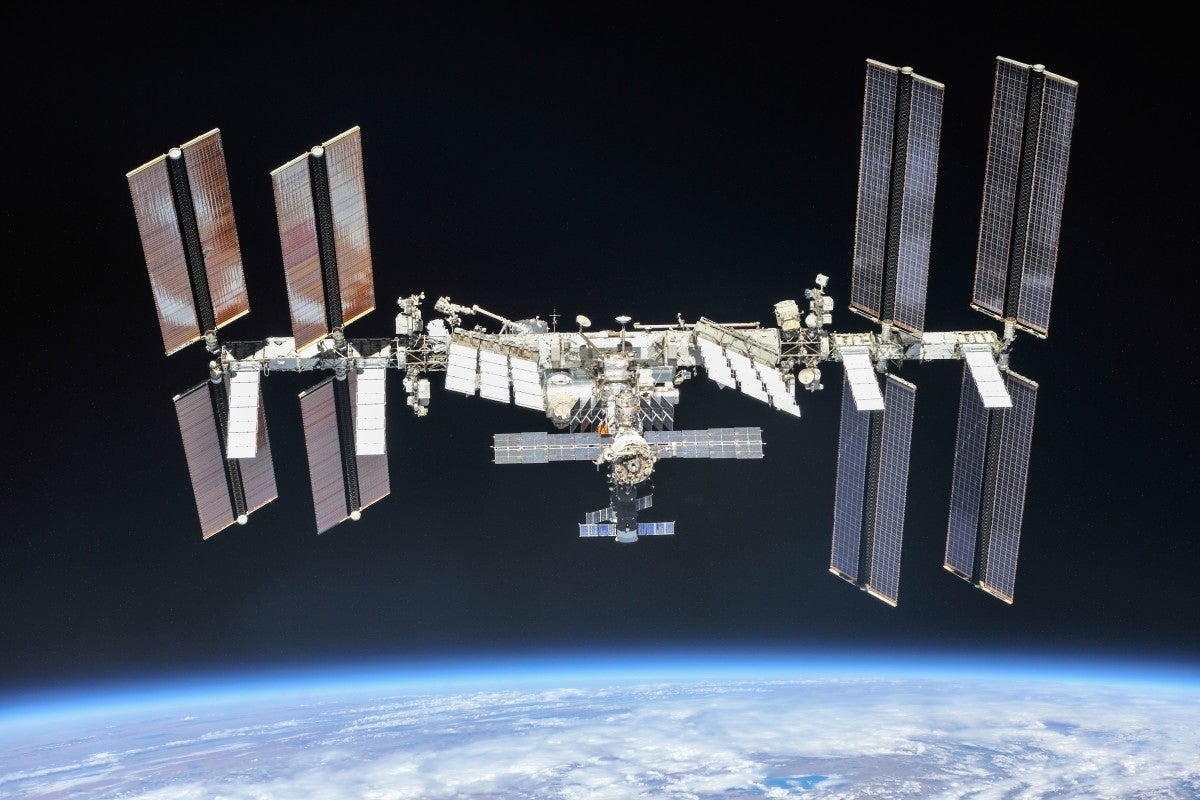
The International Space Station (ISS) is a marvel of human ingenuity, orbiting the Earth and serving as a home and workplace for astronauts from various countries. For kids who are curious about space exploration and the wonders of the universe, the ISS offers a treasure trove of intriguing facts. From its construction to the daily lives of astronauts on board, the ISS presents a captivating blend of science, technology, and human endeavor.
In this article, we will embark on an exhilarating journey to uncover 18 fascinating facts about the International Space Station. Whether you're a budding astronaut, a science enthusiast, or simply curious about life beyond our planet, these facts will ignite your imagination and deepen your understanding of this extraordinary feat of engineering and collaboration. So, buckle up and get ready to explore the wonders of the ISS!
Key Takeaways:
- The International Space Station (ISS) is a massive structure in space, the size of a football field, where astronauts from around the world live and work together, conducting cool experiments and witnessing 16 sunrises and sunsets every day.
- The ISS is like a super high-tech space laboratory that orbits Earth at 28,000 kilometers per hour, hosting over 3,000 research projects and helping scientists learn about space, test cool technologies, and understand the effects of space travel on the human body.
The International Space Station (ISS) is the size of a football field.
The ISS is the largest human-made structure in space, spanning approximately the area of a football field. This incredible feat of engineering and collaboration provides a home and workplace for astronauts from around the world, conducting scientific research and experiments in microgravity.
The ISS travels at a speed of 28,000 kilometers per hour.
Zooming through space at a mind-boggling speed of 28,000 kilometers per hour, the ISS completes an orbit around Earth approximately every 90 minutes. This rapid pace allows astronauts to witness 16 sunrises and sunsets each day, offering a breathtaking spectacle from their unique vantage point.
The ISS has been continuously inhabited since November 2000.
For over two decades, the ISS has served as a symbol of international cooperation, with astronauts from various countries living and working together in this orbiting laboratory. This sustained human presence has contributed to groundbreaking discoveries and advancements in space exploration.
The ISS orbits Earth at an altitude of approximately 400 kilometers.
Circling our planet at an altitude of around 400 kilometers, the ISS remains within the Earth's protective magnetosphere while enabling astronauts to conduct experiments in a microgravity environment. This proximity to Earth facilitates regular cargo resupply missions and crew rotations, ensuring the station's smooth operation.
The ISS has hosted over 3,000 research investigations from scientists around the world.
As a hub for scientific inquiry, the ISS has facilitated a wide array of experiments across various disciplines, including biology, physics, astronomy, and materials science. These studies have yielded valuable insights with potential applications in medicine, technology, and environmental sustainability.
The ISS has a modular design, comprising interconnected pressurized modules.
The ISS's modular architecture allows for flexibility and expansion, with additional modules and components gradually integrated over time. This adaptable layout enables astronauts to navigate through different sections for living quarters, laboratories, and operational activities, fostering a dynamic and functional environment.
The ISS is a joint project involving five space agencies: NASA, Roscosmos, ESA, JAXA, and CSA.
This collaborative endeavor unites the expertise and resources of the National Aeronautics and Space Administration (NASA), the Russian Federal Space Agency (Roscosmos), the European Space Agency (ESA), the Japan Aerospace Exploration Agency (JAXA), and the Canadian Space Agency (CSA). Together, they form an international partnership dedicated to advancing space exploration.
The ISS has a lifespan that extends into the 2030s.
With ongoing maintenance and upgrades, the ISS is anticipated to remain operational for years to come, fostering continuous scientific research and technological innovation. This extended lifespan underscores the enduring value of the ISS as a platform for studying the effects of long-duration space missions on the human body and conducting experiments in a unique space environment.
The ISS serves as a platform for testing technologies for future deep-space missions.
In addition to its scientific research objectives, the ISS serves as a testing ground for technologies and systems essential for future space exploration endeavors, including missions to the Moon, Mars, and beyond. This role as a proving ground for advanced space technologies contributes to the advancement of human spaceflight capabilities.
The ISS has a distinctive structure with large solar arrays for power generation.
Equipped with expansive solar arrays, the ISS harnesses solar energy to generate power for its operations and scientific experiments. These arrays, spanning a significant area, capture sunlight in the harsh environment of space, providing the necessary energy to sustain the station's activities.
The ISS offers a one-of-a-kind perspective of Earth from space.
Astronauts aboard the ISS have the privilege of observing our planet from a unique vantage point, witnessing natural phenomena, weather patterns, and human activity on a global scale. This perspective fosters a profound appreciation for Earth's beauty and fragility, inspiring a sense of stewardship for our planet.
The ISS crew conducts spacewalks for maintenance and assembly tasks.
To maintain and enhance the ISS, astronauts undertake spacewalks, venturing outside the confines of the station to perform crucial maintenance, repairs, and installations. These daring excursions into the vacuum of space demonstrate the skill and courage of the ISS crew members.
The ISS's microgravity environment enables experiments not possible on Earth.
The absence of gravity-induced settling and convection in the ISS's microgravity environment allows for experiments that would be unfeasible on Earth. This unique condition enables scientists to study phenomena such as fluid behavior, combustion processes, and cellular activities with unprecedented precision.
The ISS has a robust communication system for data transmission and astronaut connectivity.
Facilitating seamless communication between the ISS and mission control centers on Earth, the station's sophisticated communication system enables the transmission of scientific data, video feeds, and vital operational information. This network also allows astronauts to stay connected with their families and friends while in orbit.
The ISS houses advanced life support systems for sustaining crew members.
To sustain human life in the harsh environment of space, the ISS incorporates sophisticated life support systems that regulate air quality, temperature, and water recycling. These vital systems ensure the well-being of astronauts during their extended stays aboard the station.
The ISS has hosted numerous educational activities and outreach initiatives.
Embracing its role as a symbol of inspiration and discovery, the ISS has served as a platform for educational outreach, engaging students and educators worldwide through interactive initiatives and educational content. These efforts aim to ignite curiosity and passion for science, technology, engineering, and mathematics (STEM) disciplines.
The ISS has contributed to advancements in understanding the effects of space travel on the human body.
Through extensive research conducted on the ISS, scientists have gained valuable insights into the physiological and psychological impacts of long-duration space missions on astronauts. These findings are instrumental in preparing for future deep-space exploration and enhancing the well-being of space travelers.
The ISS represents a testament to the power of international collaboration in space exploration.
As a symbol of unity and cooperation among nations, the ISS exemplifies the potential for achieving remarkable feats through joint efforts and shared aspirations. This enduring partnership in space exploration serves as an inspiration for future generations and underscores the boundless possibilities of human ingenuity and teamwork.
The International Space Station (ISS) stands as a testament to human ingenuity and international collaboration, embodying the spirit of exploration and discovery. With its remarkable achievements in scientific research, technological innovation, and fostering global cooperation, the ISS continues to inspire and captivate audiences worldwide. From its modular design and cutting-edge research capabilities to its role in advancing space exploration, the ISS remains a beacon of human achievement in the cosmos. As the ISS extends its legacy into the future, it will continue to serve as a symbol of unity, pushing the boundaries of human knowledge and opening new frontiers in space exploration.
Conclusion
In conclusion, learning about ISS can ignite a sense of wonder and curiosity in kids about space exploration and scientific endeavors. The International Space Station represents a remarkable feat of human ingenuity and collaboration, serving as a symbol of international cooperation in space exploration. By understanding the ISS and its significance, kids can gain a deeper appreciation for the advancements in space technology and the possibilities that lie beyond our planet. Encouraging children to explore the wonders of space through learning about the ISS can inspire the next generation of scientists, engineers, and space enthusiasts.
FAQs
What is the International Space Station (ISS)?
The International Space Station (ISS) is a habitable artificial satellite that orbits the Earth, serving as a space environment research laboratory where scientific research and experiments are conducted in various fields such as astronomy, biology, physics, and meteorology.
How does the ISS benefit scientific research?
The ISS provides a unique microgravity environment for conducting experiments that are not possible on Earth. This allows scientists to study the effects of long-term space habitation on the human body, conduct experiments in materials science, and explore the behavior of fluids and combustion in microgravity, among other research opportunities.
Was this page helpful?
Our commitment to delivering trustworthy and engaging content is at the heart of what we do. Each fact on our site is contributed by real users like you, bringing a wealth of diverse insights and information. To ensure the highest standards of accuracy and reliability, our dedicated editors meticulously review each submission. This process guarantees that the facts we share are not only fascinating but also credible. Trust in our commitment to quality and authenticity as you explore and learn with us.


